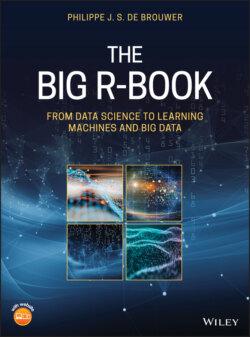Читать книгу The Big R-Book - Philippe J. S. De Brouwer - Страница 31
Notes
Оглавление1 1 You, will of course, first have to install the base software R. More about this in Chapter 4 “The Basics of R” on page 21.
2 2 The number sign, #, is also known as the “hash sign” or “pound sign.” It probably evolved from the “libra ponda” (a pound weight). It is currently used in any different fields as part of phone numbers, in programming languages (e.g. in an URL it indicates a sub-address, in R it precedes a comment, etc), the command prompt for the root user in Unix and Linux, in set theory (#S is the cardinality of the set S), in topology (A#B is the connected sum of manifolds A and B), number theory (#n is the primorial of n), as keyword in some social media, etc. The pronunciation hence varies widely: “hash” when used to tag keywords (#book would be the hash sign and the tag book). Hence, reading the “#”-sign as “hashtag” is at least superfluous). Most often, it is pronounced as “pound.” Note that the musical notation is another symbol, <, that is pronounced as “sharp” as in the music (e.g. C<).
3 3 ISO standards refer to the standards published by the International Organization for Standardization (ISO). This is an international standard-defining body, founded on 23 February 1947, it promotes worldwide proprietary, industrial and commercial standards. At this point, 164 countries are member and decisions are made by representatives of those countries. ISO is also recognised by the United Nations.
